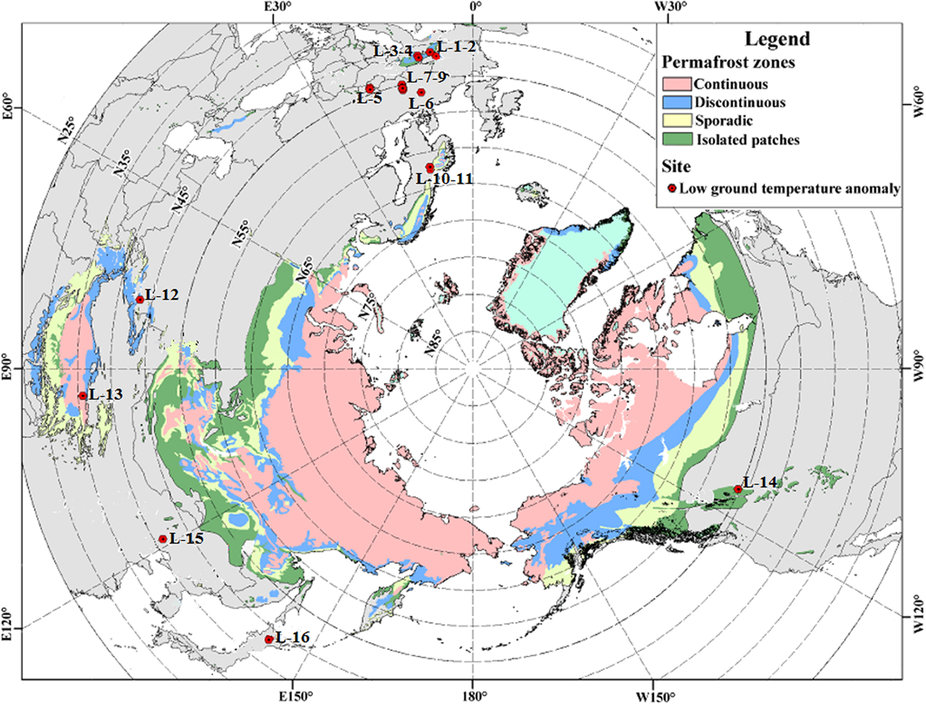A weird patch of "cold Earth" in China stays frozen through blazing summers
Researchers have discovered a mysterious patch of Earth in China that remains frozen, even throughout the hottest summers.
Patches of permafrost aren't unusual in particularly cold or elevated parts of the planet, but the weird thing about Pingquan County in Northern China -where the "cold Earth" has been discovered - is that it isn't really either of those.
As Ross Pomeroy reports for RealClearScience, the frozen Earth patch first came to scientists' attention in the summer of 2011, when local hikers stumbled across a patch of ice-cold ground below the top soil at an elevation of just 900 metres above sea level, and with air temperatures exceeding 26 degrees Celsius (80 degrees Fahrenheit).
Permafrost itself isn't that uncommon - frozen ground that remains at or below zero degrees Celsius (32 degrees Fahrenheit) for at least two years in a row lies below roughly a quarter of the northern hemisphere's surface.
But usually it occurs a lot closer to the poles. This cold Earth patch - more formally known as a 'low ground temperature anomaly' - is more than 600 kilometres further south than the southernmost limit of continuous permafrost on the Eurasian continent, and less than 1 km above sea level.
The only other anomalous cold Earth patch in the northern hemisphere that's further south than this is on top of the Qinghai-Tibet Plateau, at an elevation of 4,700 metres (15,400 feet).

The Chinese cold Earth anomaly isn't small either, measuring roughly 80 metres (262 feet) long, 20 metres (66 feet) wide, and with a depth of 10 metres (33 feet).
Given all of that, it really doesn't make sense for China's cold Earth patch to remain frozen all summer.
The find was interesting enough for a team of researchers from the Chinese Academy of Sciences to spend four years, between 2011 and 2015, observing the area, during which time ambient air temperatures reached above 32 degrees Celsius (90 Fahrenheit) in the region.
After conducting a series of regular temperature measurements, the team found that the Earth patch is able to remain frozen year-round, and they think it's because of the slope's unique top soil composition - there's a 30-cm (12-inch) layer of peaty soil on top, and then the permafrost is sandwiched in a layer of blocky sand.

This block layer of sand works like a special type of insulation that keeps the cold Earth cool by preventing heat exchange in summer, but facilitating it in winter.
"Because cold air is denser than warm air, it tends to displace warmer air in the pore spaces between the blocks and causes air convection in winter time; while in summer time, no convective heat transfer takes place and heat exchange is mainly in the form of conduction," the team writes in Scientific Reports.
"Essentially, the imbalance of heat losses in winter and heat absorbs in summer produces a net heat loss around a year and thus lowers the ground temperature."
The near-surface layer of peaty soil also enhances this effect. There's more rain at the site in summer, so by the time the soil freezes in winter, it has high moisture content - and icy, peaty soil just happens to be 1 to 2 times more thermally conductive than dry peat.
This means in winter the top soil is a thermal conductor (letting the cold in) and in summer it's an insulator (keeping the heat out).
Not only does this research solve the mystery of the strange cold Earth patch in Pingquan County, it also offers a clever engineering solution that could help protect structures built on top of permafrost as conditions heat up in the future.
The scientists used the newly built Qinghai-Tibet railway as an example, which runs along the permafrost of the Qinghai-Tibet Plateau - a region where ambient temperatures are predicted to increase up to 2.6 degrees Celsius in the next 50 years.
By using a similar crushed rock layer to cover the permafrost, the team suggests that they might be able to keep it securely frozen all year round - just like this strange patch of frozen ground in China. Take that, climate change.
The research has been published in Scientific Reports.
Bron: http://www.sciencealert.com/a-weird-patch-of-cold-earth-in-china-stays-frozen-through-blazing-summers | Gewijzigd: 31 januari 2017, 11:22 uur, door Joyce.s

 A weird patch of "cold Earth" in China stays frozen through blazing summers
A weird patch of "cold Earth" in China stays frozen through blazing summers




